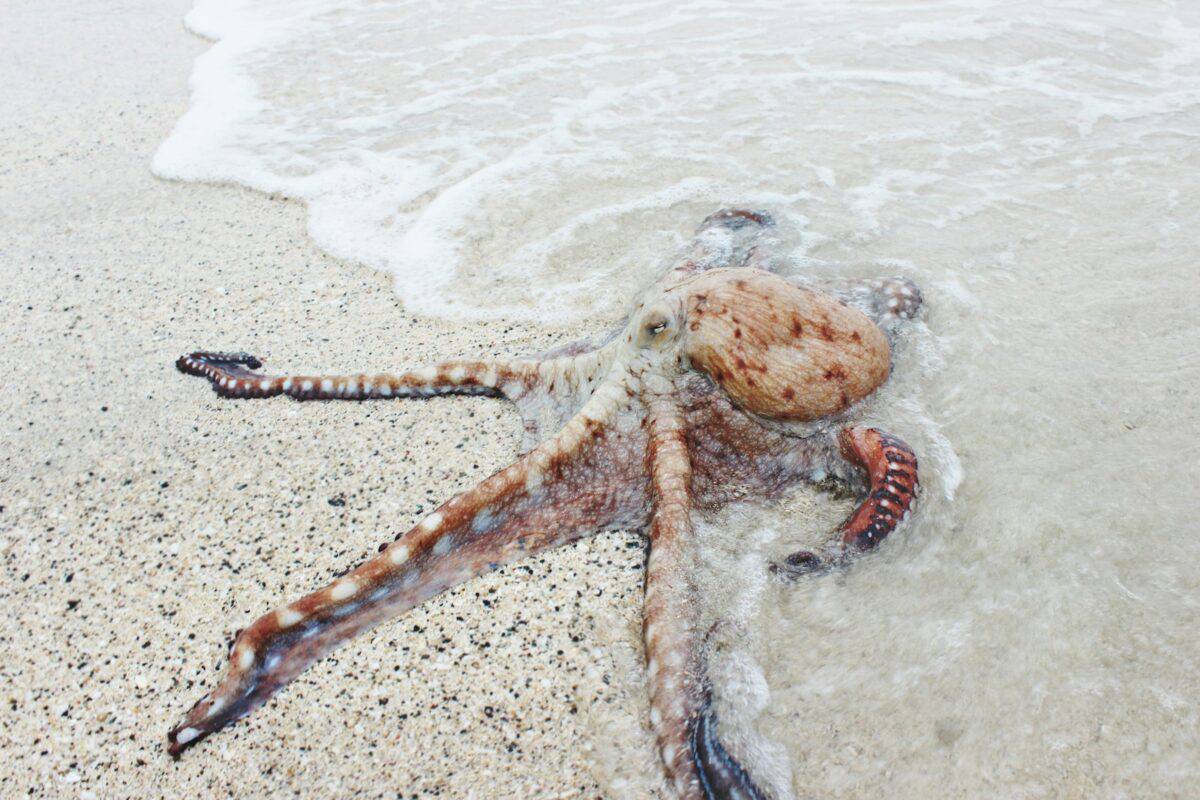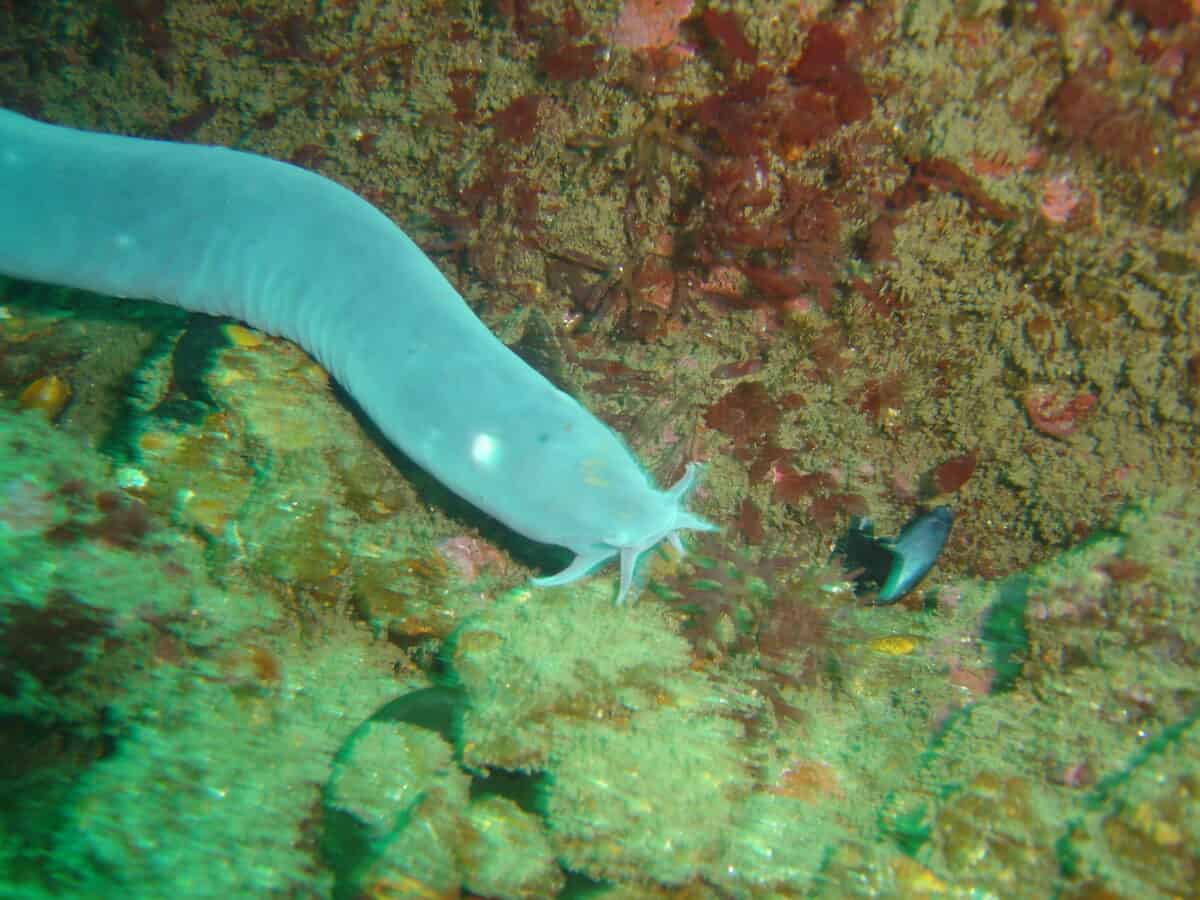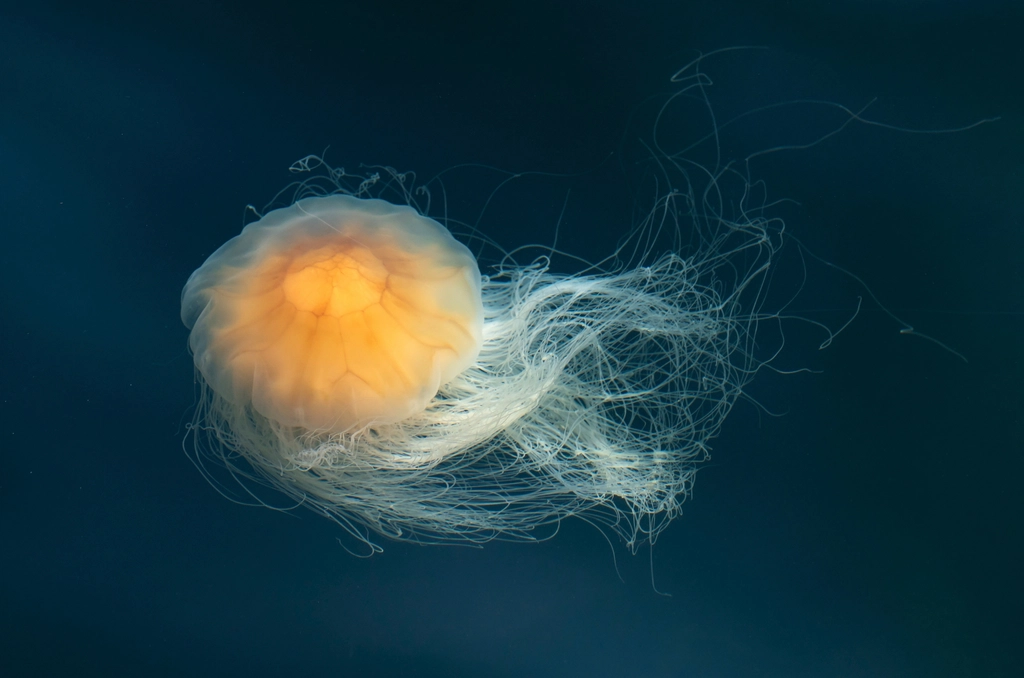The vast, mysterious depths of our oceans have long captivated human imagination, housing creatures so bizarre and otherworldly that they seem to belong in science fiction rather than reality. It’s no surprise that filmmakers frequently turn to marine life for inspiration when creating alien beings, sea monsters, and other fantastical creatures. The unique adaptations, strange appearances, and sometimes terrifying capabilities of ocean dwellers provide perfect templates for sci-fi nightmares and wonders. From the luminescent depths to coastal shallows, marine biology has influenced some of cinema’s most memorable monsters and extraterrestrials. This article explores ten marine creatures that have inspired iconic sci-fi movie characters, demonstrating how truth can indeed be stranger than fiction.
The Giant Squid Inspiration for Movie Monsters

The giant squid (Architeuthis dux) has inspired countless sea monster tales and sci-fi creations. These elusive cephalopods can reach lengths of up to 43 feet and possess the largest eyes in the animal kingdom—measuring up to 10 inches in diameter. Their massive tentacles, powerful suckers, and mysterious deep-sea habitat have made them perfect inspirations for movie monsters. The 1954 film “20,000 Leagues Under the Sea” featured a memorable giant squid attack scene, while more recently, the “Kraken” in “Pirates of the Caribbean: Dead Man’s Chest” borrowed heavily from giant squid biology. Perhaps most notably, the alien creatures in “Arrival” (2016) were nicknamed “heptapods” and featured squid-like appearances and movement patterns, with their communication resembling the ink-spreading capabilities of cephalopods. The fact that live giant squid weren’t successfully filmed until 2012 only added to their mystique as creatures on the border between science and science fiction.
Anglerfish Nature’s Deep-Sea Nightmare

With its bioluminescent lure dangling from its head and a mouth full of needle-like teeth, the anglerfish (family Lophiiformes) seems custom-designed for horror movies. These deep-sea predators have inspired numerous alien creatures, most notably the terrifying anglerfish-like monster that lures Marlin and Dory in “Finding Nemo.” While not strictly a sci-fi film, this portrayal influenced later sci-fi creations. The 2018 film “The Meg” features deep-sea lighting effects reminiscent of anglerfish bioluminescence, and the creatures in “Pitch Black” (2000) share the anglerfish’s hunting strategy of using light to attract prey in darkness. The extreme sexual dimorphism of anglerfish—where males permanently fuse to females as tiny parasites—has also influenced sci-fi portrayals of alien reproduction and parasitism. The anglerfish demonstrates how evolution can produce organisms so bizarre that they seem to belong in science fiction rather than reality.
Jellyfish Floating Aliens of Earth

Jellyfish, with their transparent, pulsating bodies and trailing tentacles, have directly influenced the design of aliens in numerous sci-fi films. These ancient creatures (phylum Cnidaria) have existed for over 650 million years and possess remarkable adaptations including the ability to be functionally immortal in some species. The aliens in “The Abyss” (1989) drew heavily from jellyfish biology, featuring translucent bodies and fluid movement through water. More recently, the spacecraft in “Arrival” (2016) employed a vertical orientation and movement pattern reminiscent of jellyfish propulsion. The bioluminescent capabilities of many deep-sea jellyfish inspired the glowing creatures in “Avatar” (2009), while the tentacle-trailing aliens in “Life” (2017) combined jellyfish and octopus characteristics. Perhaps most striking is how the aliens in “Edge of Tomorrow” (2014) employed a central nervous system structure similar to the decentralized neural net of jellyfish. These ancient marine creatures provide filmmakers with ready-made alien aesthetics that audiences find simultaneously beautiful and unsettling.
Octopuses The Intelligent Eight-Armed Wonders

Octopuses (order Octopoda) represent perhaps the most alien-like intelligence on Earth, with distributed brains, problem-solving abilities, and remarkable flexibility that allow them to squeeze through impossibly small spaces. These characteristics have made them perfect templates for alien creatures in sci-fi films. The extraterrestrials in “Arrival” (2016) featured octopus-like appendages and intelligence patterns, while the face-huggers from the “Alien” franchise combine octopus-like gripping abilities with parasitic life cycles. The 2018 film “The Cloverfield Paradox” featured multi-armed creatures with adaptive camouflage abilities similar to octopuses. Perhaps most directly, the octopus-like aliens in “Pacific Rim” (2013) echo the problem-solving intelligence and physical capabilities of these cephalopods. Octopuses’ ability to change both color and texture, their tool use, and their seemingly unnerving intelligence make them perfect starting points for imagining truly alien forms of consciousness. With recent research suggesting octopuses may even dream, their status as inspiration for alien intelligence in film seems destined to continue growing.
Goblin Sharks Living Fossils with Extendable Jaws

The goblin shark (Mitsukurina owstoni) is often called a “living fossil” due to its primitive appearance and relation to shark lineages dating back 125 million years. Its most distinctive and science fiction-worthy feature is its protrusible jaw, which can extend outward to catch prey in a lightning-fast motion that looks eerily mechanical. This unique feeding mechanism directly inspired the secondary extendable jaws of the Xenomorphs in the “Alien” franchise. Director Ridley Scott has acknowledged marine life as an inspiration for the alien design, with the goblin shark’s jaw mechanism being a primary influence. The 2020 underwater horror film “Underwater” featured creatures with similar protruding jaw structures, while the predators in “A Quiet Place” (2018) share the goblin shark’s ability to detect prey through non-visual means (the sharks use electroreception, while the film’s creatures use sound). The pale, almost translucent skin of the goblin shark, adapted for deep-sea living, has also influenced the pallid appearance of numerous subterranean movie monsters.
Mantis Shrimp Nature’s Underwater Arsenal

Despite their small size (typically under 7 inches), mantis shrimp (order Stomatopoda) possess biological weaponry that seems straight out of science fiction. Their striking claws accelerate with the force of a .22 caliber bullet, creating cavitation bubbles that can stun prey even if the physical strike misses. Additionally, they have the most complex eyes in the animal kingdom, able to see polarized light and more color receptors than any known animal. These extraordinary capabilities have inspired several sci-fi creations. The aliens in “District 9” (2009) share the mantis shrimp’s exoskeleton structure and remarkable speed of attack. The creatures in “Attack the Block” (2011) feature bioluminescent mouths similar to the fluorescent patterns of certain mantis shrimp species. Most directly, the “Mantis” fighting mech in the video game adaptation “Snowpiercer” drew inspiration from the striking power and visual capabilities of these remarkable crustaceans. The mantis shrimp demonstrates how even small marine creatures can possess capabilities so extraordinary they seem to belong in science fiction.
Sea Cucumbers Masters of Bizarre Defense Mechanisms

Sea cucumbers (class Holothuroidea) might appear unassuming, but these echinoderms possess some of the strangest defense mechanisms in the animal kingdom. When threatened, certain species can expel their internal organs (evisceration) to distract predators, then regenerate those organs within days. Others can transform their body from solid to liquid-like states to squeeze through tiny cracks, while some species shoot sticky toxic threads (Cuvierian tubules) from their anus to entangle threats. These bizarre capabilities have inspired numerous sci-fi creations. The regenerative abilities of the aliens in “Edge of Tomorrow” (2014) mirror sea cucumber regeneration, while the shape-shifting liquid metal T-1000 in “Terminator 2: Judgment Day” (1991) shares properties with sea cucumbers’ ability to liquefy their bodies. Most directly, the “Boohbah” aliens in “Attack the Block” (2011) feature defensive mechanisms similar to sea cucumbers’ expulsion of Cuvierian tubules. These humble marine creatures demonstrate that even seemingly simple organisms can possess capabilities that strain credulity and provide perfect inspiration for science fiction.
Hagfish The Slime-Producing Aliens Among Us

The hagfish (family Myxinidae) represents one of the most ancient vertebrate lineages, with fossil records dating back 300 million years. These eel-like creatures are notorious for their unique defense mechanism: when threatened, they secrete massive amounts of slime that can expand to 10,000 times its original volume in milliseconds, clogging the gills of predatory fish. This remarkable capability has directly inspired sci-fi film monsters, most notably the slime-producing aliens in “Slither” (2006), which share the hagfish’s ability to produce copious amounts of mucus as both defense and attack mechanisms. The “black oil” alien parasite from “The X-Files” borrowed elements of hagfish biology, while the Xenomorph’s dripping secretions in the “Alien” franchise echo the hagfish’s slime production. The creature design in “The Thing” (2011) incorporated aspects of hagfish morphology and their ability to tie themselves in knots (a technique hagfish use to escape from their own slime). These primitive yet successful creatures demonstrate how evolutionary solutions to survival can appear alien to human observers.
Bioluminescent Plankton Living Light Shows

Various marine plankton species possess the ability to produce bioluminescence—living light created through biochemical reactions. This natural phenomenon creates spectacular glowing blue waves at night in certain coastal areas and has served as direct inspiration for numerous sci-fi film effects. The most notable example is James Cameron’s “Avatar” (2009), where the bioluminescent forest of Pandora was directly inspired by marine bioluminescence. Cameron has stated that deep-sea diving experiences observing bioluminescent organisms influenced his vision for the alien world. Similarly, the glowing creatures in “Life” (2017) borrowed their luminescent properties from marine plankton, while the energy signatures of the aliens in “Arrival” (2016) echo patterns seen in bioluminescent dinoflagellate blooms. The 2020 film “Color Out of Space” features an alien presence that manifests partly through unnatural bioluminescence spreading through an ecosystem, inverting the usually peaceful associations of this natural phenomenon. The ethereal beauty of marine bioluminescence continues to provide filmmakers with visual inspiration for portraying otherworldly environments and creatures.
Leafy Seadragons Nature’s Masterclass in Camouflage

The leafy seadragon (Phycodurus eques) represents one of nature’s most remarkable examples of camouflage, with leaf-like appendages that allow it to blend perfectly with seaweed and kelp forests. These relatives of seahorses move with an almost otherworldly grace, appearing to float rather than swim. This extraordinary camouflage and movement has inspired alien creature designs in multiple sci-fi films. The plant-like aliens in “Annihilation” (2018) share the seadragon’s ability to perfectly mimic plant structures while actually being animals. The creature design for the aquatic aliens in “The Shape of Water” (2017) incorporated aspects of seadragon morphology, particularly in the dorsal appendages. Most directly, the cloaking technology of the Predator in the “Predator” franchise mimics the principle behind the seadragon’s camouflage—hiding in plain sight by blending with the surrounding environment. The seadragon demonstrates how evolutionary adaptations for survival can produce organisms whose appearance and movement seem more designed than evolved, making them perfect templates for alien life in science fiction.
Deep-Sea Thermal Vent Communities Inspiration for Alien Ecosystems

The discovery of thriving ecosystems around deep-sea hydrothermal vents in the 1970s revolutionized our understanding of life’s requirements. These communities exist without sunlight, deriving energy from chemosynthesis rather than photosynthesis, with bacteria converting toxic hydrogen sulfide into usable energy. This alien-like ecosystem has directly inspired sci-fi portrayals of extraterrestrial life. James Cameron’s “The Abyss” (1989) featured intelligent aquatic aliens living in deep-sea environments similar to thermal vent communities. The underground ecosystem in “Journey to the Center of the Earth” (2008) borrowed heavily from thermal vent biology. Most significantly, scientists and filmmakers now recognize that thermal vent communities provide our best Earth analog for potential life in extreme environments elsewhere in the solar system, such as Europa’s subsurface ocean or Enceladus’ hydrothermal systems. The 2013 film “Europa Report” directly incorporated current scientific thinking about thermal vent-like ecosystems potentially existing on Jupiter’s moon. These remarkable deep-sea communities demonstrate how even on Earth, life can exist in conditions once thought impossible, expanding our imagination about potential alien life forms.
Conclusion: The Enduring Connection Between Marine Biology and Science Fiction

The relationship between marine creatures and science fiction continues to evolve as our understanding of ocean life deepens. With each new deep-sea discovery, filmmakers gain fresh inspiration for alien designs and capabilities. The peculiar adaptations found in marine organisms—from the distributed intelligence of octopuses to the extreme pressure adaptations of hadal trench dwellers—provide ready-made templates for imagining life evolved under different conditions on other worlds. This connection works both ways, as science fiction sometimes anticipates scientific discoveries about marine life, creating a fascinating dialogue between imagination and research. As we continue exploring Earth’s oceans, which remain over 80% unmapped and unexplored, we can expect even more strange and wonderful creatures to emerge that will inspire the next generation of science fiction. Perhaps most importantly, this relationship highlights how the most alien environments and organisms on our planet deserve protection and study, as they expand our understanding of life’s possibilities both on Earth and potentially beyond.
- The Secretary Bird A Raptor That Hunts on Foot - August 9, 2025
- 10 Dog Breed Restrictions That Stir Controversy in U.S. States - August 9, 2025
- 13 Animals That Outsmart Their Predators - August 9, 2025

